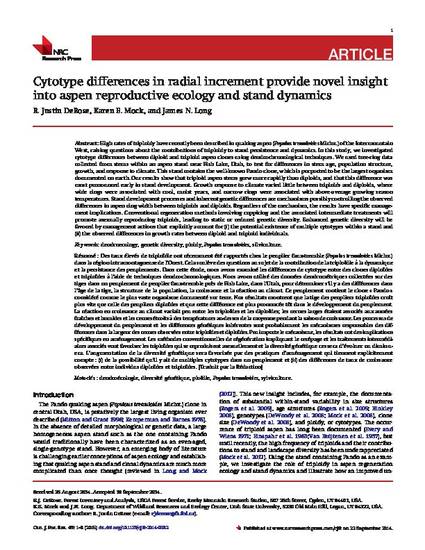
Article
Cytotype differences in radial increment provide novel insight into aspen reproductive ecology and stand dynamics
Canadian Journal of Forest Research
(2015)
Abstract
High rates of triploidy have recently been described in quaking aspen (Populus tremuloides Michx.) of the Intermountain West, raising questions about the contributions of triploidy to stand persistence and dynamics. In this study, we investigated cytotype differences between diploid and triploid aspen clones using dendrochronological techniques. We used tree-ring data collected from stems within an aspen stand near Fish Lake, Utah, to test for differences in stem age, population structure, growth, and response to climate. This stand contains the well-known Pando clone, which is purported to be the largest organism documented on earth. Our results show that triploid aspen stems grew more rapidly than diploids, and that this difference was most pronounced early in stand development. Growth response to climate varied little between triploids and diploids, where wide rings were associated with cool, moist years, and narrow rings were associated with above-average growing season temperatures. Stand development processes and inherent genetic differences are mechanisms possibly controlling the observed differences in aspen ring width between triploids and diploids...
Disciplines
Publication Date
2015
DOI
http://dx.doi.org/10.1139/cjfr-2014-0382
Publisher Statement
USDA Forest Service Publication
Citation Information
Karen E. Mock. "Cytotype differences in radial increment provide novel insight into aspen reproductive ecology and stand dynamics" Canadian Journal of Forest Research Vol. 45 Iss. 1 (2015) p. 1 - 8 Available at: http://works.bepress.com/karen_mock/90/
